Heads up – Massive Sports Tech Holiday Deals List is Live!!! The Garmin Fenix 8 is $250 off (even the Fenix 8 Pro is $100 off!), the Apple Watch Ultra 3 is on sale, the Garmin inReach Mini 2 is $249, the GoPro Hero 13 Black, DJI NEO, and a ton of other brands/deals, including Wahoo, Oura, Whoop, Polar, Samsung, Google, and more than 100 sports tech deals here!
I’m DC RAINMAKER…

I swim, bike and run. Then, I come here and write about my adventures. It’s as simple as that. Most of the time. If you’re new around these parts, here’s the long version of my story.

You'll support the site, and get ad-free DCR! Plus, you'll be more awesome. Click above for all the details. Oh, and you can sign-up for the newsletter here!
Here’s how to save!
Wanna save some cash and support the site? These companies help support the site! With Backcountry.com or Competitive Cyclist with either the coupon code DCRAINMAKER for first time users saving 15% on applicable products.
You can also pick-up tons of gear at REI via these links, which is a long-time supporter as well:Alternatively, for everything else on the planet, simply buy your goods from Amazon via the link below and I get a tiny bit back as an Amazon Associate. No cost to you, easy as pie!
You can use the above link for any Amazon country and it (should) automatically redirect to your local Amazon site.
While I don't partner with many companies, there's a few that I love, and support the site. Full details!

Want to compare the features of each product, down to the nitty-gritty? No problem, the product comparison data is constantly updated with new products and new features added to old products!

Wanna create comparison chart graphs just like I do for GPS, heart rate, power meters and more? No problem, here's the platform I use - you can too!

Think my written reviews are deep? You should check out my videos. I take things to a whole new level of interactive depth!

Smart Trainers Buyers Guide: Looking at a smart trainer this winter? I cover all the units to buy (and avoid) for indoor training. The good, the bad, and the ugly.
-
Check out my weekly podcast - with DesFit, which is packed with both gadget and non-gadget goodness!

Get all your awesome DC Rainmaker gear here!
FAQ’s
I have built an extensive list of my most frequently asked questions. Below are the most popular.
- Do you have a privacy policy posted?
- Why haven’t you yet released a review for XYZ product you mentioned months ago?
- Will you test our product before release?
- Are you willing to review or test beta products?
- Which trainer should I buy?
- Which GPS watch should I buy?
- I’m headed to Paris – what do you recommend for training or sightseeing?
- I’m headed to Washington DC – what do you recommend for training?
- I’m from out of the country and will be visiting the US, what’s the best triathlon shop in city XYZ?
- What kind of camera do you use?
-
5 Easy Steps To The Site
In Depth Product Reviews
You probably stumbled upon here looking for a review of a sports gadget. If you’re trying to decide which unit to buy – check out my in-depth reviews section. Some reviews are over 60 pages long when printed out, with hundreds of photos! I aim to leave no stone unturned.
Read My Sports Gadget Recommendations.
Here’s my most recent GPS watch guide here, and cycling GPS computers here. Plus there are smart trainers here, all in these guides cover almost every category of sports gadgets out there. Looking for the equipment I use day-to-day? I also just put together my complete ‘Gear I Use’ equipment list, from swim to bike to run and everything in between (plus a few extra things). And to compliment that, here’s The Girl’s (my wife’s) list. Enjoy, and thanks for stopping by!
Have some fun in the travel section.
I travel a fair bit, both for work and for fun. Here’s a bunch of random trip reports and daily trip-logs that I’ve put together and posted. I’ve sorted it all by world geography, in an attempt to make it easy to figure out where I’ve been.
My Photography Gear: The Cameras/Drones/Action Cams I Use Daily
The most common question I receive outside of the “what’s the best GPS watch for me” variant, are photography-esq based. So in efforts to combat the amount of emails I need to sort through on a daily basis, I’ve complied this “My Photography Gear” post for your curious minds (including drones & action cams!)! It’s a nice break from the day-to-day sports-tech talk, and I hope you get something out of it!
The Swim/Bike/Run Gear I Use List
Many readers stumble into my website in search of information on the latest and greatest sports tech products. But at the end of the day, you might just be wondering “What does Ray use when not testing new products?”. So here is the most up to date list of products I like and fit the bill for me and my training needs best! DC Rainmaker 2024 swim, bike, run, and general gear list. But wait, are you a female and feel like these things might not apply to you? If that’s the case (but certainly not saying my choices aren’t good for women), and you just want to see a different gear junkies “picks”, check out The Girl’s Gear Guide too.

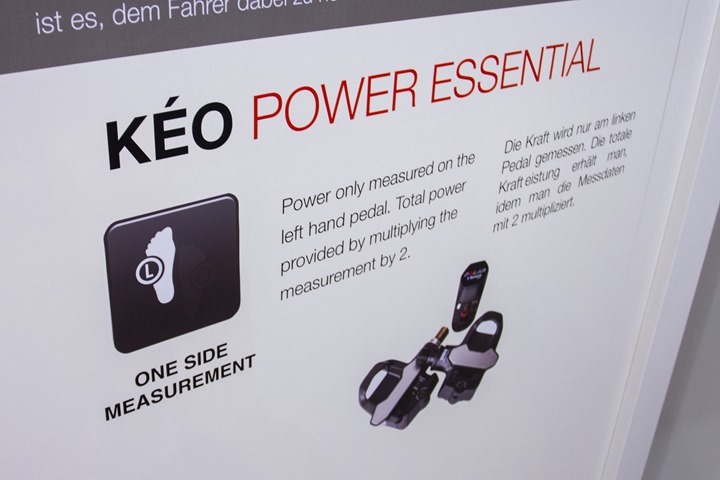
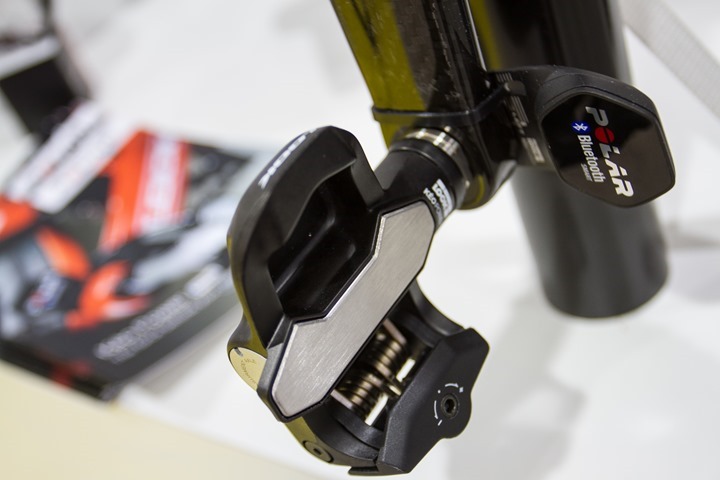
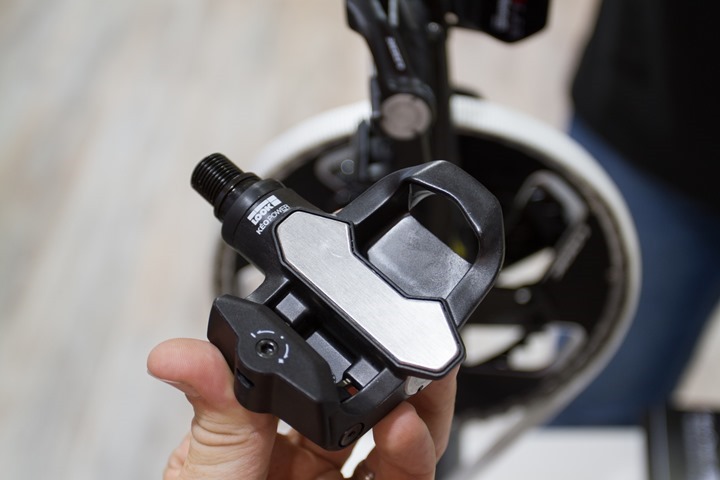
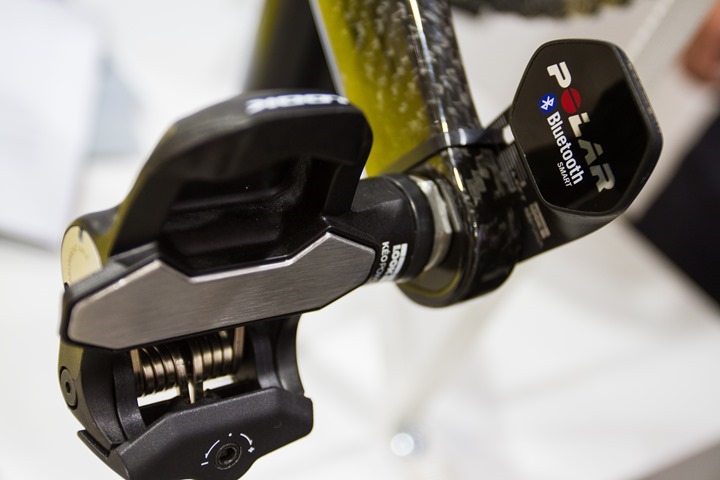

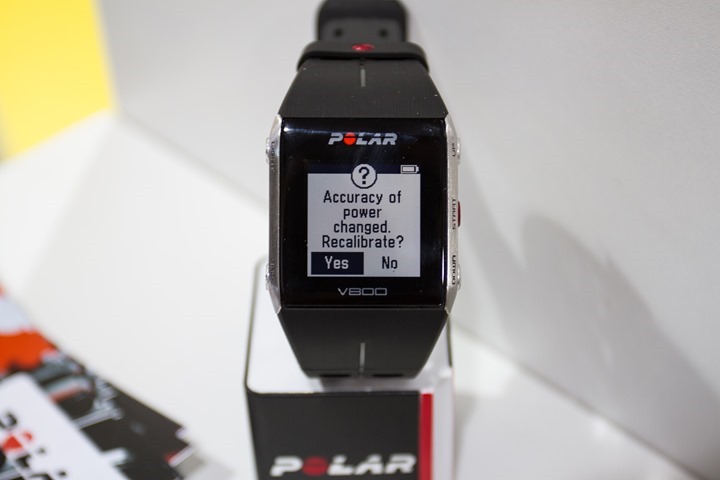
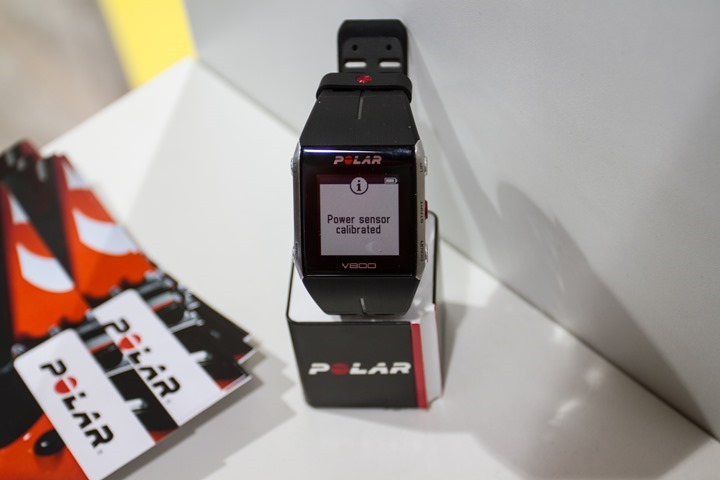
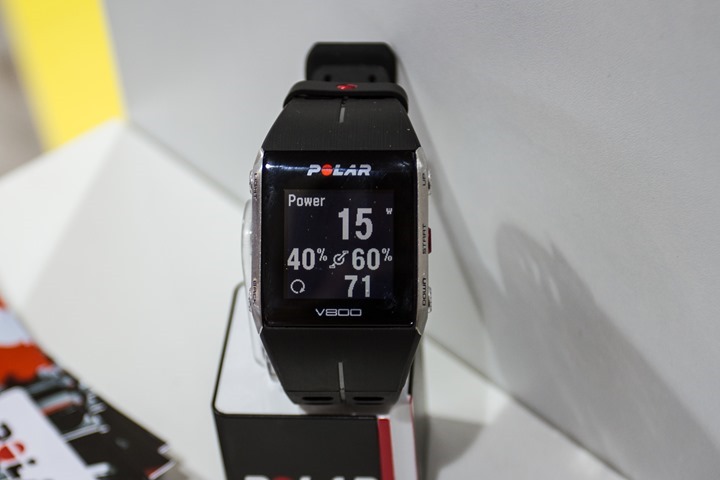
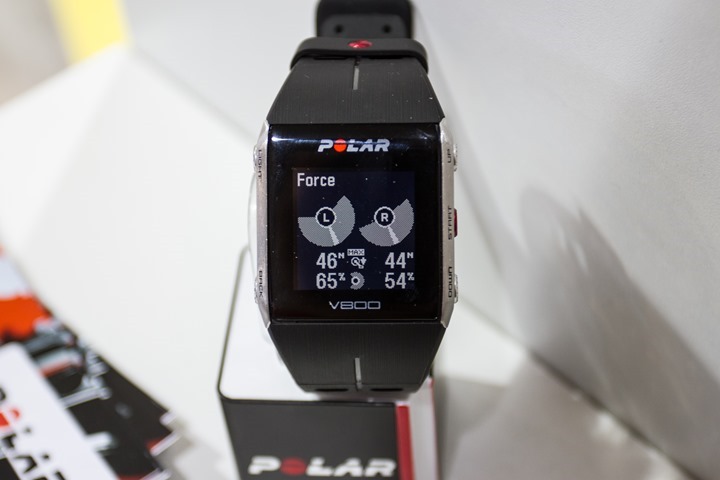
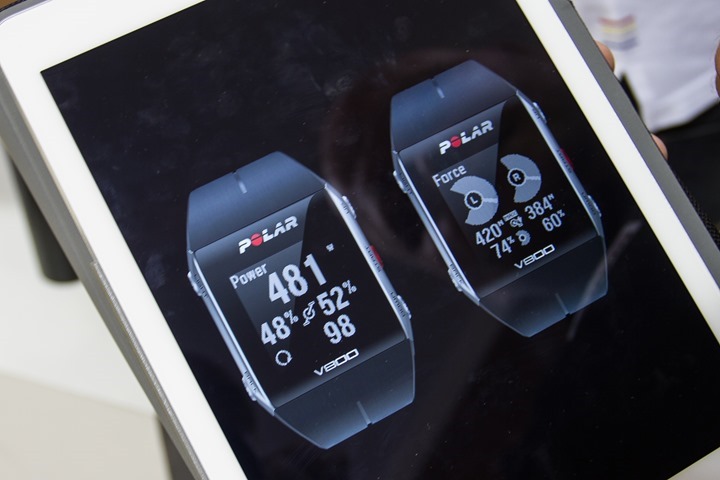
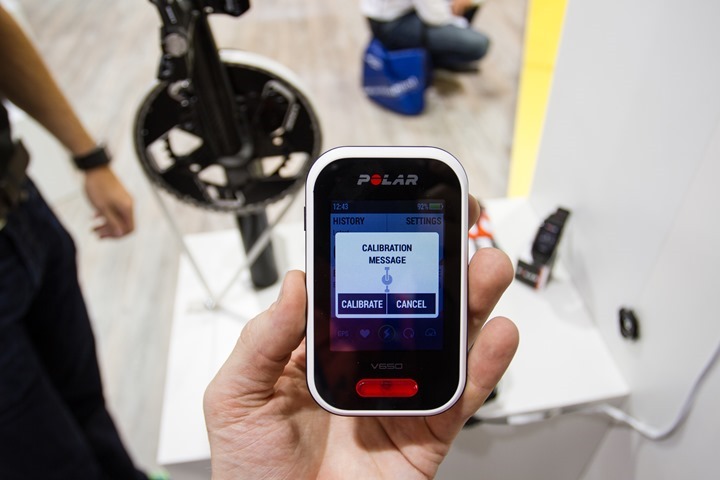
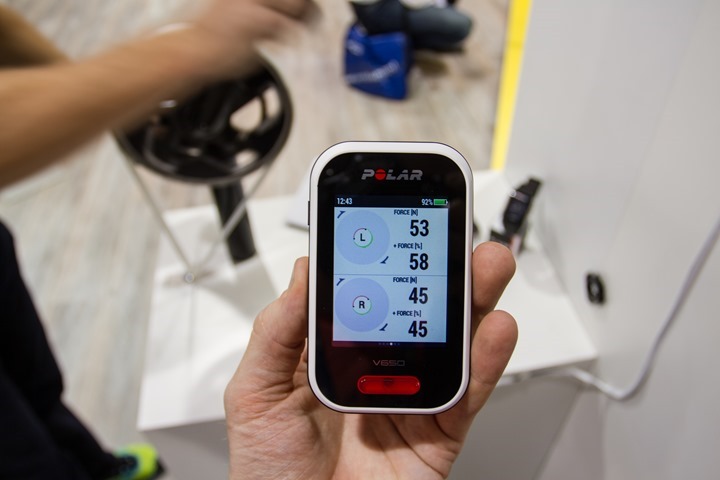
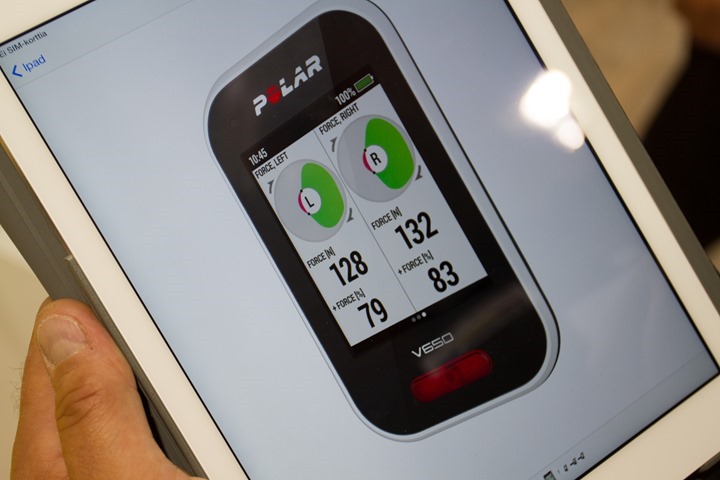
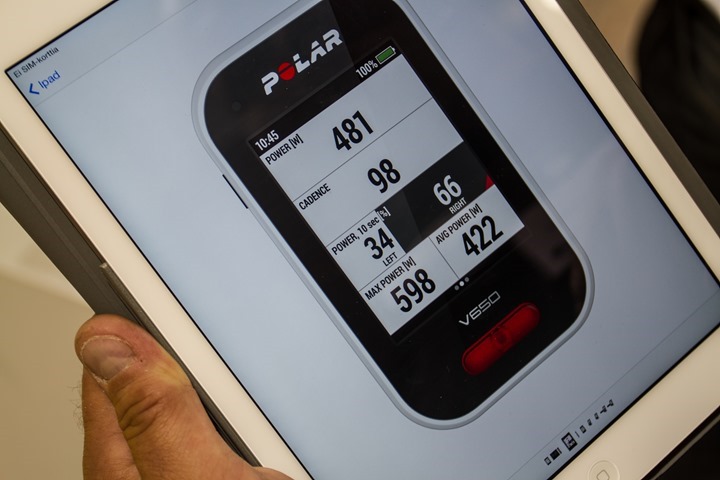
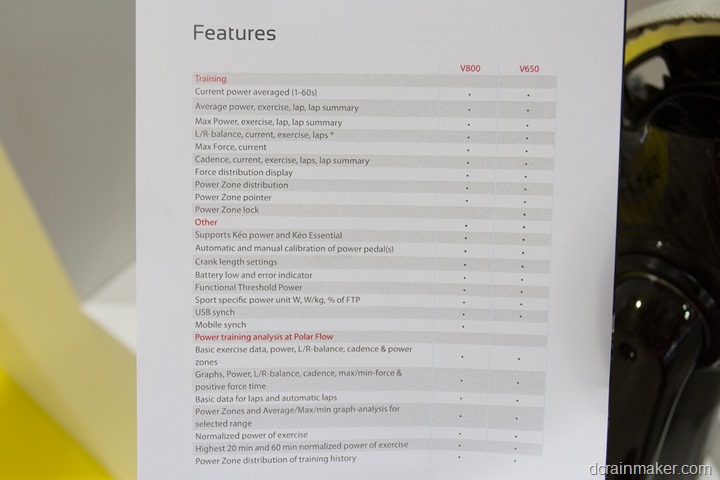
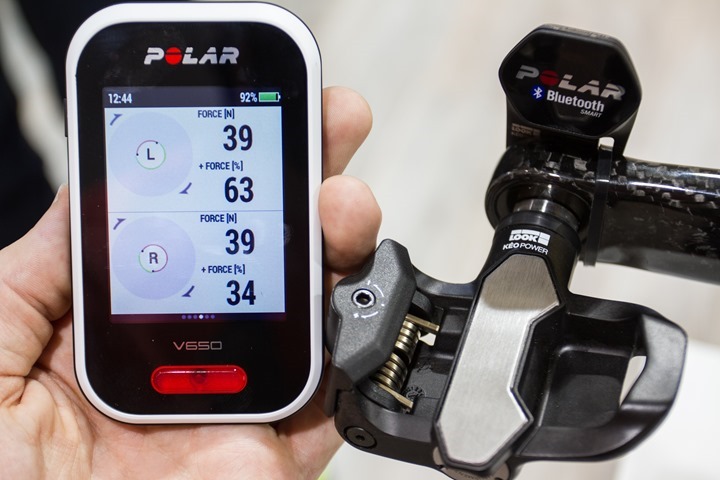
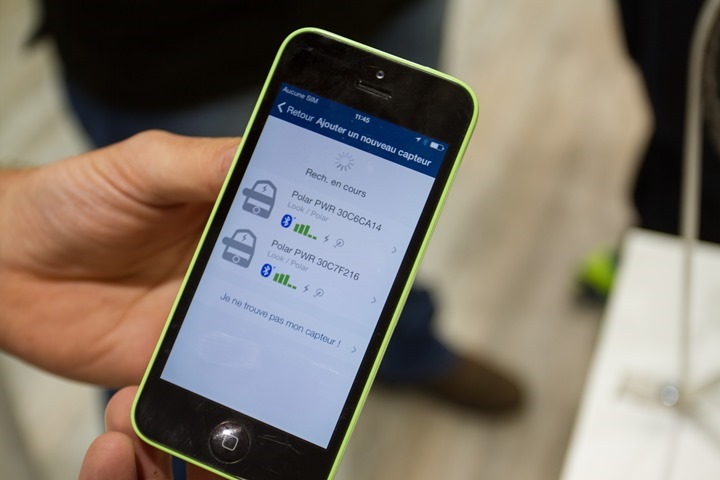
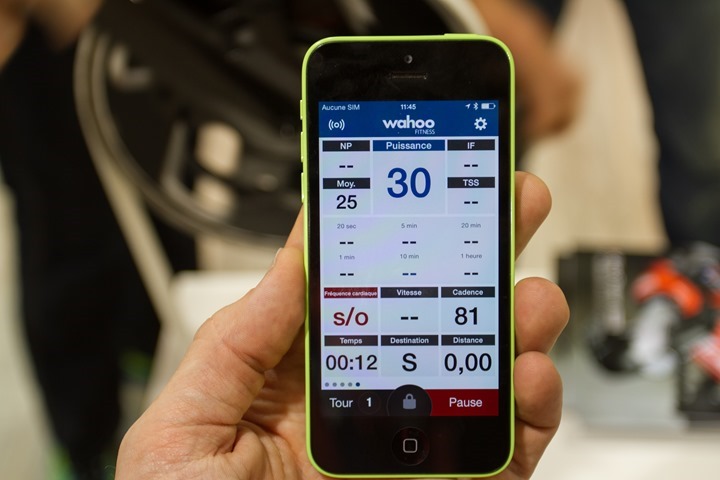
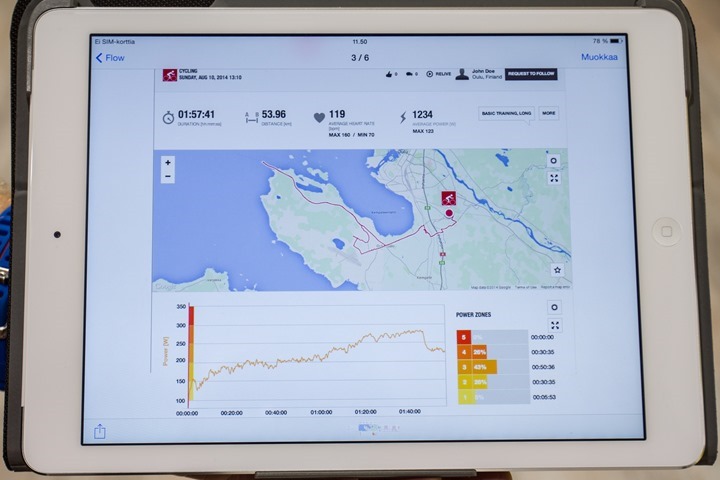
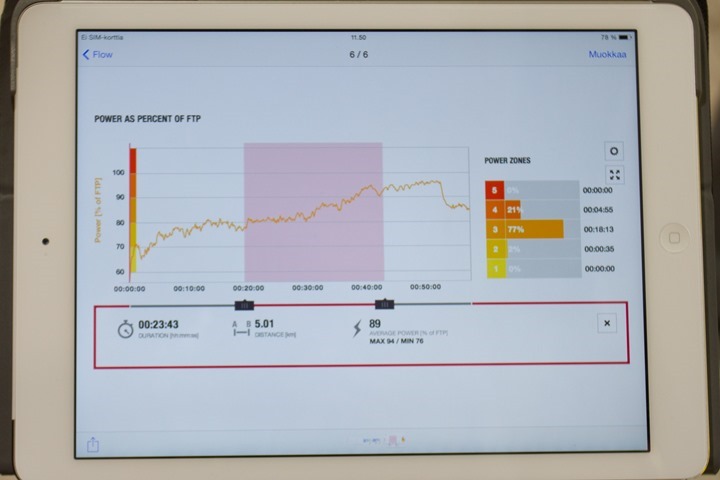
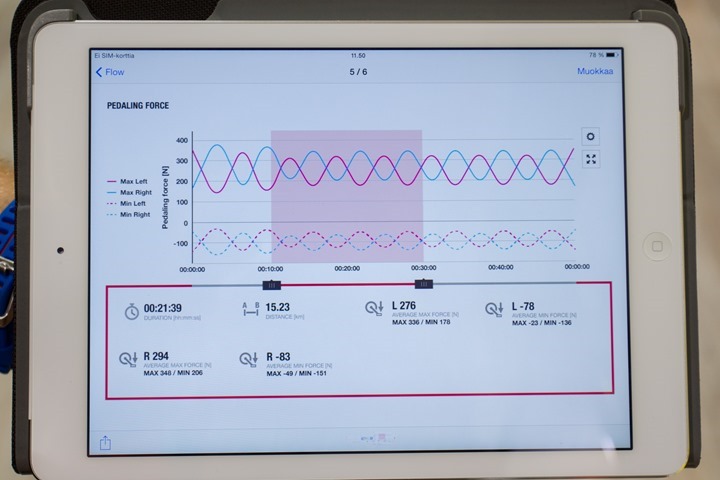





















That looks like a lot of data that nobody will be able to figure out how to use effectively for quite some time, but still sexy-looking data.
“Next, I got a bit of a hands-on demo”
Ha-ha, nice one!
So I guess this means the Late Aug/Sept timeframe for the power functionality in the V800 has slipped to the right. Any word on swimming metrics if they’ve slipped or nothing heard from Polar?
No word on that yet.
No comment on th ridiculous pricing for the Essential? At least Garmin had the decency not to charge 65% of the full price for 50% of the product. As important, what makes Polar think its product is almost 2x as good as Stages?
It’s Rotor LT time again: both the Polar and the Vector S are simply me-toos. They might be more interesting me-toos, and it could be argued that they offer some advantages over Stages (mainly the upgrade path), but it’s anybody’s guess whether the difference in price reflects their real-world value.
I see the pricing as significantly different between Rotor LT and Vector-S.
Amen. My comment above regarding the pricing of the Essential v. Vector S ignored the fact that the Rotor LT makes the Essential look like a bargain. Other than the upgrade option, is there any reason anyone would even consider one of the others instead of Stages? (This coming from someone still dreaming of a $500 option, at which point I’ll probably pull the trigger.)
C’mon Ray, I never said they cost the same, that would be pretty ignorant, right?
What they all have in common is that they are a cut-down functionality / reduced price version of an existing system.
The other trait they share is the price isn’t really close to that of Stages. The Vector S is the least far, but there’s no direct competition.
I’d say the core/singular benefit of Vector over Stages is portability. On the flip side, Stages can also go into the mountain bike realm, and you have pedal choice.
Not if your pedals are connected to Campagnolo cranks though.
DC Rainmaker said:
At 6 years old there is no difference between the strength of girls or boys.
From: link to ncbi.nlm.nih.gov
—
Also it is “15 W” not “15w”. I suggest a space between the 15 and the W. more importantly, i’m certain it should always be a capital W.
Appreciate the study link.
As for 15w vs 15 W, the internet at large (all of us, the entire world actually) came together and had a conference. We collectively decided that 15w was perfectly suitable and the common way of writing out wattage in anything other than a formal research paper. If one Google’s long enough, they should be able to find the meeting minutes from the event.
Hahaha…
Game. Set. Match. Rainmaker
Dcrainmaker, now that both garmin and polar show pedal force application. Can you run a test to see if oval rings do make a diffrence to power phase application or smoothing the pedal stroke.
I’ll ask and see if they’re accounting for it.
Yes, please do that! I’m quite interested as well!
So when is the V650 coming out…
Polar V650 Head Unit Release Date: Currently the first week of October 2014
I don’t think that’s what Darwin asked. The release date was in the article, just like it was for the v800. What he, and I’m sure others would like to know is when will it actually come out so that customers can buy it. In the case of the v800 these were very different dates indeed, and one could argue that the v800 still hasn’t been fully delivered since there has been no noteworthy planned functionality added in firmware updates.
That’s the date they’ll be delivered/shipped to customers. Beginning of October.
As for delivery of the V800, by any industry standard metric the V800 has been ‘delivered’. Whether or not the features promised/implied are present is an entirely different matter.
So far, no significant price drops in powermeterland… Just “me too” as stated above. I am waiting for your news/impressions before I purchase a Stages PM, but so far no game changers in sight.
Why stages over the vector? Unless you have two bikes with the same crank system – how are you better off?
Ray,
This is a great blog – absolutely essential reading for anyone interested in the gear and training. The ‘girl arm’ comment, though, leaps out for the wrong reasons in a blog that is always informed, impartial and credible.
Hit like a girl? Try this: link to youtube.com
Hmm, while I disagree, I’ll change it to 6-year old child. Had I said ‘Hit like a girl’, that’d be different, but I didn’t say that. The 6-year old aspect was specifically added.
Great video. Thanks for sharing that, Liz
I always find it somwhat annoying when people use the comment section to give you corrections unless those corrections are post theme specific. Know Ray that your work is appreciated regardless. I laughed at the 6-year-old-girl comment, and the fart blamer comment of the last post. Your humor is not lost on me because of trivialities.
Love all your reviews and such but don’t you get bored after a while i think you have been doing that for a couple of years and this must be draining to write all of that for the others!
Sandy
Nah, there’s always new stuff that’s different and interesting.
Not happy about the timeline slip (No power for me in my September IM), but if your screenshots tell it right, I’m pretty stoked about the depth of supported power features. ;-)
So Ray, what would you recommend for me to be using in addition to my by Sept 27th power-support-less V800 as a headunit on the bike? (I’ve got a stages PM and will be wearing the Polar BT HR strap)…
In training I use my Xperia active (with ipBike) for power support, but that’s not ideal in races.
I’m sort of in the same boat with a PowerTap G3 w/BTLE Cap, V800, and a HIM on 9/20. I had hoped that at a minumum the V800 would be doing power by then and possibly that the V650 would be out and I could just use that. I’ve been logging all my power data with the PowerTap app on my iPhone but that’s not optimal for a race and my race power data is mostly what I’m interested in. So, any good suggestions are appreciated. I’d hate to have to use a Garmin or Suunto head unit but I will for the bike segment if that’s all I’ve got.
Honestly, there’s not really a great solution there without outlying lots of cash (or doing what you’re doing as far as the iPhone logging). If you did have a Garmin around, you could just pickup an ANT+ PowerTap cap for that for about $100 (I think that’s the price). Or, for that race if you can find a friend to borrow a Garmin for a few days.
I’ve got an Ant+ cap for the hub already so I can use that, and also a Ambit 2s lying around here somewhere so I think that’ll be my solution for the race. Thanks for all the awesome work you do Ray!
I’d agree, that sounds optimal. Good luck!
Recarding the release of the V650. Is it first week of October 2014 for both US and Europe ?
Global.
So, unless I’m missing something, you could buy this for $1100 or spend $199 more ($1499-$200 rebate=$1299) for dual sided measuring with Vector……I think you’ve talked about the pricing when reviewing the full system previously. Seems they’ve priced themselves out of the market unless you have an affinity for Polar products.
The Polar system has a slight advantage over Vector in that, likes Stages, it has BTLE and thus could be paired with phones.
It could cater to that part of the audience who insist all they need or want is their phone – their argument that bike computer + Vector S = as much or more cash outlay than the Polar.
Of course, it only makes sense if, for whatever reason, Stages is a no-go.
Or you could buy a $30 ant+ dongle for your phone. Problem solved…
I think you’re more than likely just seeing a case where as usual Polar products just cost more. No clear idea why, but they’ve always historically cost more.
Clark, indeed you could, the way I see it, BTLE is the game people want to play now – have you seen all the complaints about the new Edge 1000 not supporting BTLE sensors?
ANT+ dongles will still be used by that niche who really wants to make a certain combo work and don’t mind the inconvenience – for everyone else, they’re largely a thing of the past.
At this point though, aside from the V800/V650, and to an unclear degree the Ambit3 – I just don’t see significant demand over the next 6-9 months for Bluetooth Smart power meters compared to ANT+ ones.
If Garmin or another major player were to connect to them, then perhaps, but overwhelmingly today people are using Garmin (ANT+) head units, followed by ANT+ SRM’s, Joule’s and the like – all ANT+.
To be fair, Polar products are “better” than others usually (albeit in an iPhone v Android kind of way). I swapped to Garmin with the Fenix 2 and find that the unit is nowhere near as well designed while the v800 hides its bulk well. Although Polar suck at delivering features, I never saw a bug in any of the 3 devices I had while the Fenix has had various issues and lock ups in a few months.
On the flip side of that, Garmin who play the role of Android in this story, have many many more features and tend to push the technology first. They also allow me to completely customise the watch and menus, even (god forbid) the ability to change the strap colour after purchase. Although running dynamics may not prove useful I like that they thought of adding it. I like that I don’t need a foot pod to get cadence, and I like that they have added every possible sport measurement they could and got it out of the door despite a few bugs.
Overall I’m happy to pay a premium to Polar for the watch, and when it’s finished I’ll get a v800 without question. The sensors on the other hand, I can see no excuse for their pricing as they’ve never demonstrated why theirs might be better. They are certainly bigger!
“the way I see it, BTLE is the game people want to play now”
I thought that before I bought two Ant+ units and found that Ant+ allows me to see all my sensors from both devices. Ray has suggested here that although BTLE 4.1 will allow this, none of the current devices are likely to be updated to allow it. This is a significant feature which Bluetooth is missing while the only advantage of BTLE seems to be a feeling that it’s more industry standard somehow – which I realise now is mainly marketing and the fact that we’re all used to the logo from other devices. In reality, in this industry (the fitness one) ANT+ is the defacto standard and some companies are trying to undermine that because ANT+ is a Garmin baby.
David, IME Polar devices are not less buggy than Garmin’s, although Garmin has made a reputation for themselves for releasing new products in what would be otherwise regarded as a beta stage, in the medium to long term they tend to get their act together pretty nicely. The main difference IMO is that Polar is an eminently sport focused firm and that used to show in the feature set. Newer units might be different because Polar has been very very slow to join the GPS revolution.
As for Bluetooth VS ANT+ my comments were pertaining to the smartphone side of equation. That ANT+ is well rooted among bike computer users shouldn’t take anyone by surprise, but the native support on smartphones is nearly abysmal, with Sony Ericsson being the only brand consistently offering ANT+ in their devices.
OTOH Bluetooth is well, well rooted in the phone world: if a device is recent/expensive enough talking to sensors is basically as easy as turning BT on, no additional parts to buy or use, and there is no question that in due time every new device being sold will feature full BT Smart support.
I don’t think BT is any more of a standard than ANT+, it’s just smartphones have been increasingly been used as sports devices and this is bringing ovelap where there used to be none.
I’m not even sure there’s a really good reason for a bike computer to suppor BT other than convenience, and with dual mode sensors, I wonder whether anyone will care.
I’ve always thought the difference between Garmin/Suunto was a runner/triathlete thing. At least, that’s my impression: all of my Tri friends bought into Suunto gear long ago (for completely valid reasons: good gear), while all of my runner friends say “how do you pronounce that?” All of which plays into price point: triathletes invest a lot more cash in their gear than your average runner, so the price nudges higher before you hit a balk point.
I think it really depends on country/region to be honest. In the US, I saw far more folks with Garmin units, whereas in Europe I see a bigger blend of Suunto/Polar (and Garmin).
Fwiw, ANT+ is now supported on the vast majority of new medium to higher end Android phones (since roughly the beginning of the year). Of course, still missing the biggie: Apple (never going to happen).
I’m curious. Why do you say with Apple it’s “never going to happen”? Have they made some kind of pronouncement in the past about ANT+? I would think that with HealthKit in iOS 8 (and presumably Yosemite) that they might have some interest in communicating with the vast majority of existing health sensors.
You know how some people really hate the Yankees? Like…really, really hate them?
That’s sorta like the Apple team and ANT+. There’s some solid bad blood there from years ago. I know some companies that have gone to Apple to discuss products with them and nearly been told to get out of the room for even mentioning ANT+ in a meeting discussing a product. The term I’ve heard a few people from different companies was it’s effectively a ‘over our dead bodies’.sort of thing.
Now, no doubt a new focus on health could change that (especially with Samsung doing it), but I still don’t think that’s likely. Apple will simply push BLE even harder. It’s relatively simple for them, and they know it.
Could that possibly have been a Jobs thing? Steve is gone. The chips exist, there’s a large installed base of ANT+ sensors, seems like an easy call.
Personally I’d have no problem with buying a dual ANT+/BLE sensor, but I have no interest in BLE only because of my existing Garmin devices. I’m expecting at least another 2 years out of the Edge 800, and who knows how much longer (since I don’t use them as often) for the Fenix or the VIRB Elite. I have zero interest in using my phone as a head unit, so I’m not really their market unless the wearable device is really compelling (and sweat/weatherproof). I’d have only minor qualms about switching to Android (essentially, buying Angry Birds and its siblings again and dealing with iTunes playlists would be annoying), but there’s no reason to since my phone will never be my fitness device.
My 2 european cents, up until about the mid 2000s HRM meant Polar. Suunto was usually the lone model some shops kept locked in a corner, with a huge price tag on it, and noone would buy it. Then Garmin came along and it started spreading but the early units were still expensive and big compared to Polar’s, so it was confined to the the high end.
As for cyclists, I still see a huge number of dedicated, non-GPS bike computers like Sigma, VDO, Ciclosport and many other brands. This might have to do with GPS units still being expensive, a full-featured bike computer (with HRM and barometric altimeter) might cost about half the price of an Edge 500, that figure might go down to 25-30% if you’re not particular about continuous recording. Strava however has been changing this.
And of course things might be different in different countries.
A large installed base of existing non Apple devices never meant much to Apple. For example, flash. Or say the proprietary connector on their iPhone/iPad devices. ….
Apple wants to control everything about the experience and wants to try and sell all devices for it
Hi Ray. Do you know if Polar & Garmin have any plans for doing power with Mountainbike pedals?
I haven’t heard of any plans as of today, though Garmin has long stated that they expect that would be the first new pedal type that would approach when the time was right for them.
Personally, I think too much analytics distracts people from actually working out. Left-right balance is nice to check on rare occasion, but most people need to bike more with just a simple output number. Elites would use left/right to milk out a KQ or a podium spot, but a CAT 6 (to quote Bikesnobnyc) needs to just bike more to avoid his impending cardiac event. Instead of biking, he’s now fiddling with calibration and signal drop outs and who knows what.
When we buy gear, we should always strongly consider how much time it takes to turn it on and go AND how many links there are in the chain that can go wrong, having us sit in the driveway while we screw around with it.
Retrogrouch moment over… :)
Sure, and how many people do you know who ride 15 lb bikes but are 20 lbs over weight…
At this point though, all the modern power meters just turn on and work. You should typically do some form of calibration/auto zero, but that realistically takes only a few seconds.
No the people you’re talking about don’t have a problem with data getting in the way of training because they don’t train at all.
BTW the Cat 6 racing thing is mainly meant as a satire of the misplaced sense of competition you see in some riders, including (but not limited to) the kind who posts videos on YT claiming to have dropped a racer type while commuting on their hybrid – turns out the racer guy was simply someone on a beater with curved bars like they use in the TdF, running an errand and minding his own business.
Can I buy the left pedal first and later upgrade by buying the right pedal? I would like that, Polar.
Regarding the new gear as apose to more training.
Good/new gear will make me want to train more. It is a motivating factor to know I have good gear.
That being said – I could easily do without. But that is the same when talking about a bike. How many of us really need that expensive bike we drive around on. We could have saved lots of cash getting a cheaper bike.
But for me – good gear motivates.
I think having buddies (even of the virtual variety, Strava and stuff) might be a bigger push to go out of the door than buying/owning stuff – actually, having nice/new stuff is sometimes an obstacle, think bad weather, darkness, etc: anyone who might be too scared to ruin their shiny little toys ends up not using them very often.
At the other end of the spectrum you’ve got people like Ray, riding a TT bike on a gravel road under a squall. Kudos but I’d rather not do that on purpose :D
Did Polar actually confirm that V650/V800 (upon release of the Power Meter functionality) will be supporting all of the BT power meters? Will it work with Stages or PowerTap or will it start with Keo only?
Ang what about the Wahoo Kickr ? Will the Polar V650 work with that upon release ?
I talked to them about it today. It’s their intention that it should work, but, they’re checking on whether or not someone had specifically tested the Stages and PowerTap pieces. I’ll ask about the KICKR.
The challenge their having is devices not complying with the BT spec. It was eye-opening today to see them show me a massive list of 3rd party devices that don’t comply with the official BT spec, and to what degree. The list was focused on non-power devices (so HR, cadence, speed, footpods). Only a single device actually complied with spec – the 4iiii’s Viiiiva.
I believe I also added a device to that list. I had at home a 20EUR worth ELAH ‘brand’ BT bike Combo sensor, which works with iPhone Wahoo app but does not with V800. Polar promised to investigate this, but honestly, I would prefer them to focus on power meter and swimming metrics functionality upgrades instead.
Getting back to my question initial question, do you think some of the advanced power meter metrics (ex power and force distribution/balance) be applicable to Stages/PowerTap (given their hardware limitations: one sided/hub mounted of course)?
Thanks
What’s the plan then? make accommodations to talk to non-compliant devices?
I’ll detail that in a post tomorrow. But in short, they’re going to be adding shims/fixes for those with minor compatibility issues (i.e. Wahoo RPM). For those devices (2) that just flat out don’t even get close to following the standard (i.e. Pyle footpod), they won’t be adding fixes/support.
V650 in October now??? Gotta be kidding me. It better work at least.
Really stupid question – does the V650 have an ‘auto pause’ feature? For MTBing (and its stop-start nature) I’d regard this as an essential.
Hey Ray…great write up…been waiting for this for a while. I’ve got Polar Keo Power WIND on my bike already, and keen to get the bluetooth update for only $150 (not bad when I pad only $1000 for the WIND second hand in good condition) A few questions – when is the upgrade coming out, and where can I you buy it from? Also keen to hear if it works well with the SUNTO Ambit 3, and if the MIO link works with the SUNTO ambit 3. Might be a good bluetooth smart Combo – Ambit 3 – Mio Link – Polar Keo power.
The ‘where’ part is still a bit in flux. It sounds like it’ll be through Polar directly, but oftentimes you can buy the ticket through 3rd parties. I suspect we’ll hear in the next 7-10 days.
As for compatibility with the Ambit3, that’ll remain to be seen. Everything I’ve seen at this point indicates that cross-compatibility between the different BLE devices and tri/bike head units is mostly a mess.
Oh….any news if Polar is going to allow data from V800 and/or V650 to go to training peaks and strava – or is Ambit 3 the only bluetooth power meter capable smart watch that will do this?
I talk a little bit about that here: link to dcrainmaker.com
Thanks Ray….been running Polar app on the phone…seems the flow site now has an export function to .tcx which can then upload into Strava
Hi Ray – fantastic site
Still using a polar s650 as all their subsequent wrist watch type upgrades lost this functionality combination and/or didn’t support power – the only real next upgrade I was waiting for.
Now want to:
1. Get V800 – seems to have similar essential function combination to polar S range ( plus lots more)
2. Link it to stages power meter (would like to get a single one to use on both road and MTB – don’t think is likely)
3. Be able to download training data onto my computer
4. Integrate all my previous PPT training data into the new V800 polar zone ?
Your comments on this strategy?
Thanks very much
Hi Ray. Just wondered if you have any clues on how the stages power meter pairs as I have it paired but no data as yet? Polar themselves have said it is compatible
I tried on Oct 1st, with the firmware that went out then with a slew of power meters:
Kinetic InRide: Pairs, but can’t find upon start of sport activity
KICKR: Pairs, but can’t find upon start of sport activity
Stages*: Pairs, but can’t find upon start of sport activity
PowerTap G3 hub with BLE cap: Battery died…sigh, have to swap it out.
I reported those findings back to Polar, and they were able to duplicate some of them where the had devices (including Stages).
Ok thanks for the update and glad to know I am not going nuts – exactly the problem I am having. Assume they will get onto this pronto – plenty of sceptics suspecting an intentional stall to help drive keo sales!
Any news on dates for the keo power pedals?
Itching to pull the trigger on a set…
Keo power BT is available at the retailers now from what I heard. Would be great to read a review here before ordering a set.
Any timeline for your review Ray?
Hmm, I had planned to do it as part of my V650 review. Like a two birds one stone thing. But now that’s been pushed out, it’s a bit trickier. I’ve got a few other power meter reviews to still knock out, so it’s hard for me to onboard that until at least 1-2 of those are done. And honestly, with travel over the next 4-6 weeks it’s gonna be tough for me to get in the rides for another PM (the other ones I have to do are mostly just writing at this point, with data done).
Hmm, for me that’s too bad but I totally understand your side to it. Maybe I just have to make a decision for myself this time. As I like the v800 very much I’m pretty sure keo power is the route I’ll take regarding PM.
Looking forward to your review when ever it shows up!
Been testing the keo power pedals on my Monark ergometer a couple of sessions now. Set up and connecting to V800 caused no issues. Export from flow and import to Trainingpeaks works like a charm, understand that import to other 3rd party sofware has some problems.
Regarding the figures the seem to track well comparing to the watt numbers from the ergometer.
Very happy so far!
I do have a stage Power meter. So far I have been using XT 910 and 810 Units. For change I wanted to swap for Polar as I am not getting any younger I do find digit too small.
Any way, I have tried to connect Stage power Unit with V800 as it is BTLE…. V800 is finding and apparantly sincronizing with the PM unit. But V800 do not start with the activity or is not reading or capturing the data.
Polars nice but honnestly they are missing the mark by far on the the following points:
– No downloading to Strava and Training Peaks.
– Exlusion of third party sensors….
To be fair, a XT 920 is less than 500 Euro. A keo PW Units is 1600 Euro. Decison will be simple.
FWIW, Polar has stated they’re working to improve 3rd party power meter compatibility, including on Stages.
Hi Ray, I got an advice from Wahoo support to reach out to you on the subject.
I just got my Wahoo KICKR and trying to get it working with v800. I’m getting same experience as Pierre with Stage: “V800 is finding and apparantly sincronizing with the PM unit. But V800 do not start with the activity or is not reading or capturing the data”
What’s surprising and dissatisfying is that Wahoo support pointing to Polar (they told they gonna fix it) and Polar support pointing to Wahoo (Wahoo KICKR is not yet compatible with Polar v800).
Do you have any insides on the subject? Who’s gonna fix it and when? Where the problem is? I really appreciate any feedback.
That would be sad if I will need to switch from Polar to Garmin as I really like v800.
thanks,
Seva
It’s about a 60-70% Polar problem, and the remaining a Wahoo problem. Polar and Wahoo are working together, but neither have a timeframe (but I did talk with Polar about it over the weekend).
Thanks, Ray
Now it works!
after recent polar announcements and firmware updates for both v800 (firmware 1.4) and KICKR firmware (1.3.32).
I’ve just installed the Look Keo Power Essential (left pedal power only bluetooth like in this article). Should the watts be doubled by the pedal before transmitting to make up for the missing right pedal watts, or is it the head units job to double it up to simulate actual l/r combined power. I’ve never used a a power meter before, but it seems to be 50% less that i’d expect? e.g. I couldn’t hold 200w which is requiring almost threshold efforts to hold which doesn’t seem correct to me?
It should be doubling before it hits the head unit.
Hi,
please helpme figure this out….
i have a set of BLE upgraded pedals. I dont have a computer yet since the 650 is not out yet…
i connected it to my ipone running wahoo fitness…
here comes the problem. i cant get both pedals connected during workout… it is random if right or left is connected. however I can add both in the settings window…
tried everything. new batteries, reinstall app. adding the pedals in diffrent order…
i only get one pedal connected when i start the workout…
question… has anyone tested that both pedals realy connect?
I have exactly the same problem with polar keo bluetooth pedals and wahoo fittness app. Both pedals connect and reads data fine in settings but only the left is connected in the workout mode.. Don’t have v800, so cannot test. Have you figured out any solution? I am testing with ipad if it matters..
I have KEO POWER BLUETOOTH and work with Polar V800. But I don’t know, how interpret force data? Nothing in the user manual! I think about this: why I buy it, if I have not more information about vector force from POLAR? A asked for more information, but they not answer. Maybe not final product. I´m unhappy. Please, have you more information about interpreting vector force?
I don’t have a pair of pedals at this time, though, should probably ask for a demo pair now that the V650 is basically shipping. As part of that review I had planned on doing an update of the Polar Pedals (with BLE).
Thank you. In my opinion, LOOK or Polar give us more information. Now I think, that POLAR and LOOK don’t knows what produces. If I make it, I must know all about it. And I wrote it – look at the actual user manual. Nothing important information, why measurement force, whats help me it. Respect force vector direction or only show start and end force? Compare with Pioneer power metr – I thing, that it show force vector and direction vector. Pionner show pedaling efficienci and it is important for beter pedaling technique. POLAR KEO POWER is no good product. It’s very expensive and no back support and maybe show only start and end force, no direction, no pedaling efficienci. If I ask for more information to POLAR, I got the answer: look at the DC Rainmaker website. Polar know nothing about own product :-) and I don’t recommended it.
hi,
i have now the V800 and it works perfect.
100%.
the wahoo app only use one pedal. left or right.
it then calcualte the power.
the v800 delivers all you need. in fact i do not think i will buy the V650
one thing to note.
after syncing the data with flow.polar…. you have to export the data to e.g
goldencheeta to do any analysis.
the vector force data is very syntetic and i fins it only usefull
when doing low cadence power intervalls.. to keep the pedaling smooth.
note that the tcx file exported is the new standrd and in order to inport the tcx file to goldencheeta you have to edit thw file.
just open it i a standard text editor(not word) replace all ns2 to ns3
(i use mac and textwrangler)
save the file and import it to
flow is good for keeping track of the training and
the upload via iphone is just perfect.
keep in mind that the wahoo app is realy bad.
the app is free and do not expect it to work as if it costed. few 100 euro
i have used the wind version for 2 years and when using my monark 828e(ergometer)
i saw that the wind pedals showed 6-8% higher power(watt) than the bike.
the bluetooth version is like the srm. 2-3% higher.
so the bluetooth version is more accurate. it also works100 times out of 100. syncing with the watch takes afew seconds and of you go.
this system pedals + v800 is spotless in my mind
Just spoke to Polar Australia, and to upgrade the WIND Power Pedal to Bluetooth costs AU$450 and pedals to go back to France. Not quite the “inexpensive process” initially thought. Wow.
Dang, that is indeed pricey.
i paid 250€ for the upgrade kit (with new pedals) which would be AU$358,10 in Austria. There’s also a cheaper option with just a software upgrade and new transmitters for 150€ (AU$215)
Hi guys,
I have bought STAGES/SHIMANO ULTEGRA 6800 POWER METER CRANK, Polar V800 with latest update finds it but then in actual activity it doesn’t not pick data. Did any of you had the same problem. I was trying to connect it to Strava it connects but also it shows no data so do you think it might be a problem of battery in power meter ?
Thaks
Afraid I’ve got the same problem with Stages + V800, V800 finds and pairs but doesn’t show any power data. Power data is visible via Stages app on iOS so pretty sure the power meter is OK.
You mention:
“Now for those of you with the existing Polar Keo system based on W.I.N.D. (proprietary Polar protocol), you’ll be able to upgrade to the new pod system with all the benefits noted above. That’ll cost $150US/150€, which converts you from W.I.N.D. to Bluetooth Smart. Note that if you use it with existing W.I.N.D. devices, it won’t work there any longer. So it’s really for folks who are planning on getting the Polar V800 or V650, or another Bluetooth Smart power meter compliant head unit/device.”
Where can one find this upgrade offer?
I have been very disappointed with the Keo Power Pedals (after 6 months of frustration with frequently lost or inaccurate data). Agree with Pawel, the support from Polar and Look is dismal. Will not go into details but as a savvy tech guy, this product just has too many problems – I will say that I am not using the Polar receiving device but being able to not use one is the whole purpose of bluetooth industry standards. Not worth the money. Reverted to Stages Power Crank on one of my other bikes – works perfectly.